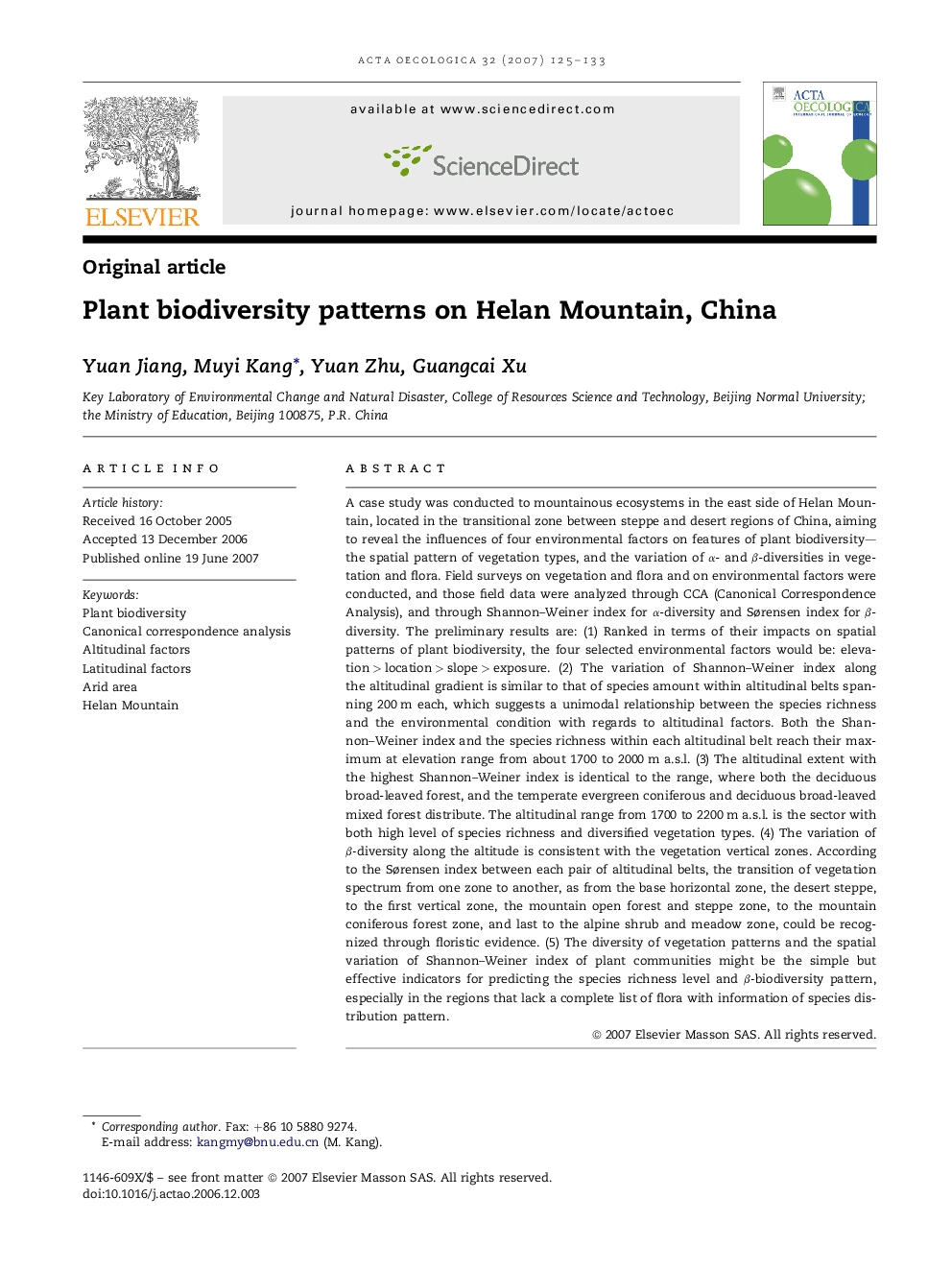| Article ID | Journal | Published Year | Pages | File Type |
|---|---|---|---|---|
| 4381531 | Acta Oecologica | 2007 | 9 Pages |
A case study was conducted to mountainous ecosystems in the east side of Helan Mountain, located in the transitional zone between steppe and desert regions of China, aiming to reveal the influences of four environmental factors on features of plant biodiversity—the spatial pattern of vegetation types, and the variation of α- and β-diversities in vegetation and flora. Field surveys on vegetation and flora and on environmental factors were conducted, and those field data were analyzed through CCA (Canonical Correspondence Analysis), and through Shannon–Weiner index for α-diversity and Sørensen index for β-diversity. The preliminary results are: (1) Ranked in terms of their impacts on spatial patterns of plant biodiversity, the four selected environmental factors would be: elevation > location > slope > exposure. (2) The variation of Shannon–Weiner index along the altitudinal gradient is similar to that of species amount within altitudinal belts spanning 200 m each, which suggests a unimodal relationship between the species richness and the environmental condition with regards to altitudinal factors. Both the Shannon–Weiner index and the species richness within each altitudinal belt reach their maximum at elevation range from about 1700 to 2000 m a.s.l. (3) The altitudinal extent with the highest Shannon–Weiner index is identical to the range, where both the deciduous broad-leaved forest, and the temperate evergreen coniferous and deciduous broad-leaved mixed forest distribute. The altitudinal range from 1700 to 2200 m a.s.l. is the sector with both high level of species richness and diversified vegetation types. (4) The variation of β-diversity along the altitude is consistent with the vegetation vertical zones. According to the Sørensen index between each pair of altitudinal belts, the transition of vegetation spectrum from one zone to another, as from the base horizontal zone, the desert steppe, to the first vertical zone, the mountain open forest and steppe zone, to the mountain coniferous forest zone, and last to the alpine shrub and meadow zone, could be recognized through floristic evidence. (5) The diversity of vegetation patterns and the spatial variation of Shannon–Weiner index of plant communities might be the simple but effective indicators for predicting the species richness level and β-biodiversity pattern, especially in the regions that lack a complete list of flora with information of species distribution pattern.
